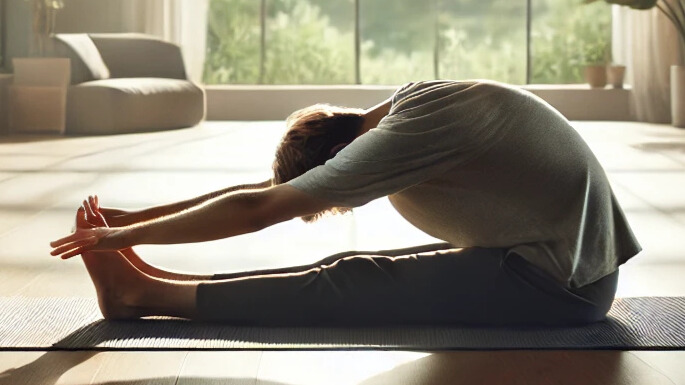In today’s fast-paced world, finding time for a full workout can be challenging. However, a 20 min vinyasa flow offers the perfect solution for those looking to stay active, improve flexibility, and achieve a sense of inner calm—all in a short amount of time. Vinyasa yoga, characterized by smooth transitions between poses synchronized with breath, is an excellent way to build strength and mindfulness. Whether you are a beginner or an experienced yogi, this 20-minute vinyasa sequence will help you refresh your body and mind.
20 Min Vinyasa
Table of Contents
Benefits of a 20 Min Vinyasa Flow
Practicing 20 min vinyasa yoga consistently can provide a wide range of physical and mental benefits. Even in a short session, you can enjoy improved flexibility, strength, and focus. Here are some key benefits of incorporating this practice into your routine:
- Enhances Flexibility and Mobility: The fluid movements help loosen tight muscles and improve joint mobility.
- Boosts Strength: Engaging in body-weight movements helps build core strength and stability.
- Increases Cardiovascular Endurance: The continuous flow of poses elevates the heart rate, making it an effective low-impact workout.
- Reduces Stress and Anxiety: Deep breathing and mindful movement help calm the nervous system and promote relaxation.
- Improves Focus and Concentration: By focusing on breath and movement, you enhance your ability to stay present and centered.
Essential Poses in a 20 Min Vinyasa Sequence
A 20 min vinyasa session typically includes a mix of standing, balancing, and seated postures that flow seamlessly from one to another. Below are some fundamental poses you can include in your practice:
1. Sun Salutations (Surya Namaskar)
- Begin in Mountain Pose (Tadasana), standing tall with feet hip-width apart.
- Inhale, lift your arms overhead, and exhale into a Forward Fold (Uttanasana).
- Step back into a High Plank, engaging your core and holding for a breath.
- Lower down through Chaturanga Dandasana, then inhale into Upward-Facing Dog (Urdhva Mukha Svanasana).
- Exhale into Downward-Facing Dog (Adho Mukha Svanasana) and hold for five breaths before repeating the sequence.
2. Warrior Flow (Virabhadrasana I & II)
- Step one foot forward into Warrior I (Virabhadrasana I), bending the front knee and extending the arms overhead.
- Open the hips and transition into Warrior II (Virabhadrasana II), stretching both arms parallel to the floor.
- Maintain a strong foundation in both legs and engage the core.
- Repeat on the other side to balance the body.
3. Balancing Poses (Tree Pose & Dancer’s Pose)
- Shift weight onto one foot and bring the opposite foot to the inner thigh or calf for Tree Pose (Vrksasana).
- Focus on a fixed point ahead to improve balance and stability.
- Transition into Dancer’s Pose (Natarajasana) by extending one leg behind and reaching the arms forward.
- Hold each pose for a few breaths before switching sides.
4. Cool Down and Relaxation
- Finish the sequence with Seated Forward Fold (Paschimottanasana) to stretch the hamstrings and spine.
- Move into Supine Twist to release tension in the lower back.
- End with Savasana (Corpse Pose), lying flat on your back with eyes closed, focusing on deep relaxation.
How to Structure Your 20 Min Vinyasa Flow
A structured 20 min vinyasa session includes warm-up movements, a strong flow sequence, and a calming cool-down. Below is a suggested breakdown:
- Warm-Up (5 minutes): Gentle stretches, neck rolls, Cat-Cow Pose (Marjaryasana-Bitilasana), and seated twists.
- Active Flow (10 minutes): Sun Salutations, Warrior Poses, and balancing postures.
- Cool Down (5 minutes): Forward folds, hip openers, and Savasana for complete relaxation.
Final Thoughts on 20 Min Vinyasa
A 20 min vinyasa session is a powerful way to cultivate mindfulness, flexibility, and strength in a short period. Whether you practice in the morning for an energizing start or in the evening for relaxation, this flow provides an excellent balance of movement and meditation. With consistency, even a brief yoga session can bring significant improvements to your physical and mental well-being. So, roll out your mat, take a deep breath, and flow into your practice!






